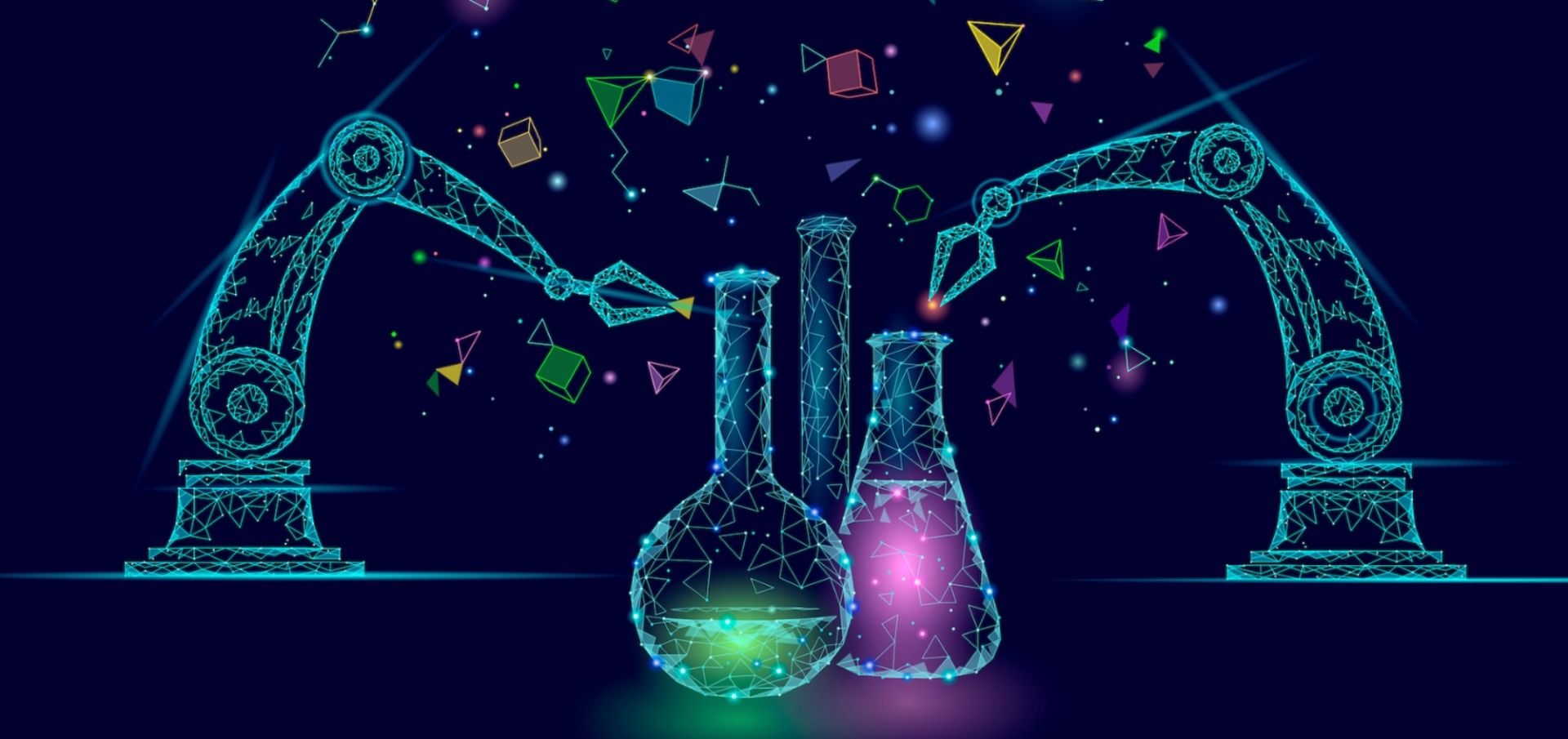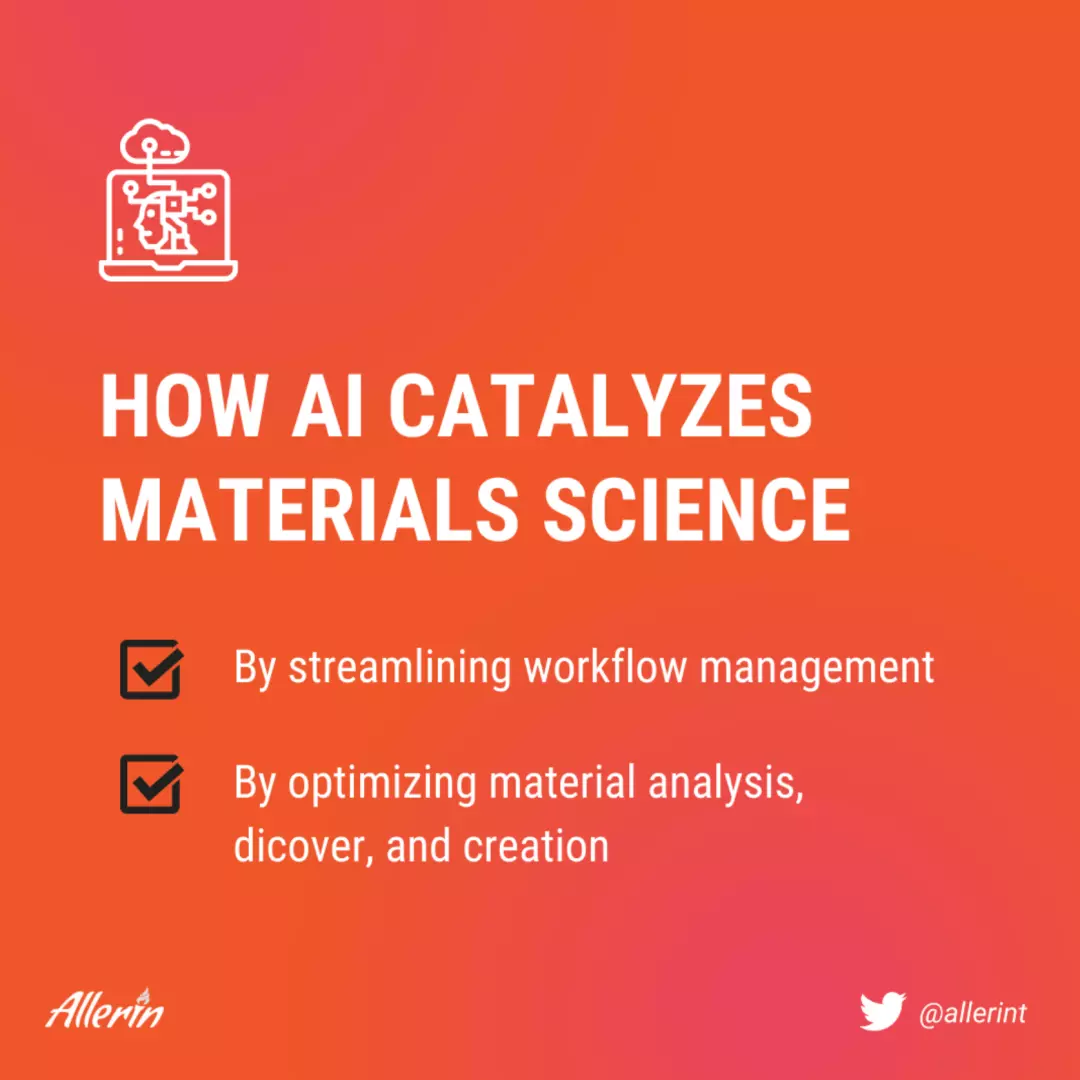Comments
- No comments found

The involvement of AI in materials science and engineering simplifies and improves material discovery, research and synthesis.
For several years now, the “cool” side of AI—new and improved software applications, pre-emptive decision-making robots, facial recognition systems, chatbots—has attracted everyone’s attention almost universally. Videos titled “Top X AI apps of the year” garner hundreds of thousands of views on YouTube, and everyone seemingly wants to be a software developer.
Amidst this AI and software obsession, materials science and engineering—the field that deals with the physical and chemical properties of all materials—tends to get overlooked. In reality, materials science is just as significant as AI, IoT, blockchain, robotics and other fields. As you know, the devices based on these technologies are underpinned by components like semiconductors, switches and cables. Materials engineers continuously work on—among other things—discovering new materials or modifying existing ones that are used to build such components.
Broadly speaking, materials science and engineering is a field that aims to increase affordability, improve performance and increase the longevity of all products by using the right materials for manufacturing them. Due to the field’s vast scope, materials engineers face certain challenges—accelerating materials research, discovering substitute materials to replace commonly-used ones, managing the complex workflow of material synthesis and research. Ironically, the use of AI in materials science helps materials researchers and engineers overcome such challenges. Material discovery and research can benefit greatly from the pattern recognition and data analysis capabilities of AI-based tools.
Here are some ways in which involving AI in materials science can revolutionize the field:

Materials scientists need to select and use automated workflows based on research constraints, materials and available data. One of the common ways of doing this is by selecting previously used workflows from a digital research repository. Based on the type of operation they're conducting, and the materials involved, researchers decide upon which workflows to use or reuse.
Choosing the most suitable workflow for research, material discovery or synthesis of materials can be a tricky process due to a variety of reasons.
Leveraging AI in materials science simplifies this decision-making process. Using the pattern recognition capabilities of AI, the selection of workflows is made on the basis of previous searches and the nature of the material involved. Additionally, machine learning can identify a bunch of "similar" workflows in repositories. This enables materials scientists to utilize specific parts of such workflows in order to create new workflows and streamline their material research, synthesis or discovery with greater precision.
After creating a workflow from scratch or selecting a used one, scientists need to make selection decisions regarding workflow software options, storage and operating system resources for workflow management. This step—known as provisioning of resources—is instrumental when it comes to executing the tasks in a workflow successfully. While the IT department of a business can handle the storage and operating system requirements, AI can be used to continuously monitor the performance levels of software applications used for executing workflows.
Workflow selection and resource provisioning are followed by the workflow execution phase of the workflow management cycle. Workflow execution involves scheduling workflow tasks—also occasionally referred to as jobs—in the order in which they need to be executed. After the scheduling is complete, the jobs in the workflow need to be continuously monitored to know whether they're utilizing the data and other resources optimally or not. Performance monitoring, anomaly recognition and resource consumption monitoring are the three main objectives of workflow execution.
Scientists can use AI-based tools developed for workflow management and monitoring to conduct top-down workflow analysis. This process involves the identification of anomalies and job completion blockades in a workflow. Workflow anomalies include tasks that are not being executed properly in the management system. Involving AI in materials science enables such systems to reschedule jobs, provision additional resources or, in some cases, create another workflow if anomalies or performance bottlenecks are detected.
Performance monitoring can be carried out on a workflow level, task level, infrastructure level—to monitor infrastructural metrics such as uptime, number of jobs per device and system latency—amongst other levels.
Workflow management is a complicated process in materials science due to multiple phases running simultaneously. As we can see, involving AI in materials science improves and simplifies the process.
Analyzing new materials can be incredibly time-consuming. The material analysis process involves high levels of trial and error. Essentially, when researchers come across new materials, they need to conduct multiple experiments to gauge their physical and chemical properties. This can be an arduous process involving several tests at multiple temperatures and pressure points. There are several other parameters that exponentially increase the number of tests and overall analyses required for such materials to see whether they can fit the requirements of specific products or not.
AI-based applications can assist scientists with material analysis. An example of this is the Closed-Loop Autonomous System for Materials Exploration and Optimization, abbreviated as CAMEO, developed by the National Institute of Standards and Technology (NIST) in collaboration with multiple researchers and institutes in the US. CAMEO uses machine learning and computer vision to determine the tests to be conducted to know whether a given material will be well-suited for real-world applications or not. One of the more common material analysis methods is X-ray diffraction. In this method, a material is bombarded with radiations to check how the rays bounce off the different molecules in them. The machine learning and computer vision-based CAMEO can assist scientists with accurately understanding the refraction angles of X-rays that will let them know the crystal structure and atomic structure of the material. Such tests generate large amounts of data related to the material being researched. CAMEO helps researchers and scientists optimize their time by ensuring that every test maximizes their knowledge and know-how. They can skip redundant tests that will give non-important information about new materials. In this way, labs and scientists can use the resources at hand efficiently.
Material analysis aids the discovery of new materials. If you think about it, discovering and creating new materials can be likened to the process of cooking a brand-new dish. So, understanding which ingredients maximize the overall taste of AI-based analysis allows scientists to select materials with the best properties and combining ability with other materials that will be used for manufacturing products. Tools like CAMEO use machine learning to study past material applications and combinations. Based on past references, AI-based materials science tools can enlist recommendations for components that will make new materials structurally stronger. CAMEO, for example, discovered the material Ge4Sb6Te7, a combination of germanium, antimony, and tellurium, after going through 177 potential material components and billions of combinations. The system took 10 hours and 19 experimental cycles before discovering the material. Without the involvement of AI in materials science, such a process would have taken about 90 hours.
The creation of Ge4Sb6Te7 also involved CAMEO heavily. Structurally, the alloy changes state quickly and has several crystalline and amorphous variations. The scientists used CAMEO to perform pattern recognition and predictive analysis to use the variation that had the biggest "optical contrast" between its amorphous and crystalline forms. This leads to the creation of the alloy with the best commercial value in products.
As we can see, tools like CAMEO, which involve machine learning, computer vision, and AI in materials science, are highly useful for material analysis, discovery, and creation.
Another example of AI being used for material creation was seen in the Netherlands in 2019. Researchers at the TU Delft University developed a compressible yet durable material that could be used to create bicycles that could be fit into your pocket. The entire discovery process was AI-assisted and, as per sources, did not require a single lab test to be conducted.
Organizations use materials science to create or source new materials that will add commercial value for them in the form of better product performance, lower production costs or both. For example, to build even faster track-ready sports cars than the ones available today, carmakers will need to discover and analyze materials that are better than carbon fiber and aluminum—the principal body components of current sports cars. Such materials will help reduce drag even further, while also improving the vehicle's acceleration and overall aerodynamics more than aluminum and carbon fiber.
Through such applications, businesses can achieve significant improvements in product qulity and value by involving AI in materials science.
Naveen is the Founder and CEO of Allerin, a software solutions provider that delivers innovative and agile solutions that enable to automate, inspire and impress. He is a seasoned professional with more than 20 years of experience, with extensive experience in customizing open source products for cost optimizations of large scale IT deployment. He is currently working on Internet of Things solutions with Big Data Analytics. Naveen completed his programming qualifications in various Indian institutes.
Leave your comments
Post comment as a guest